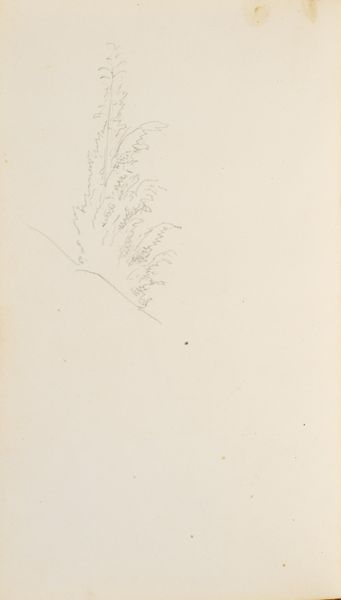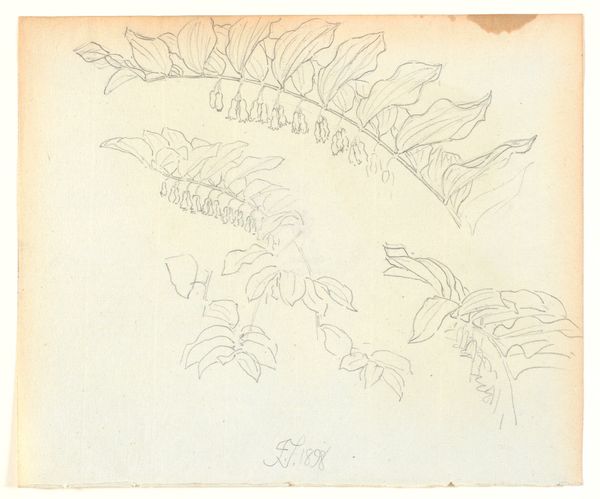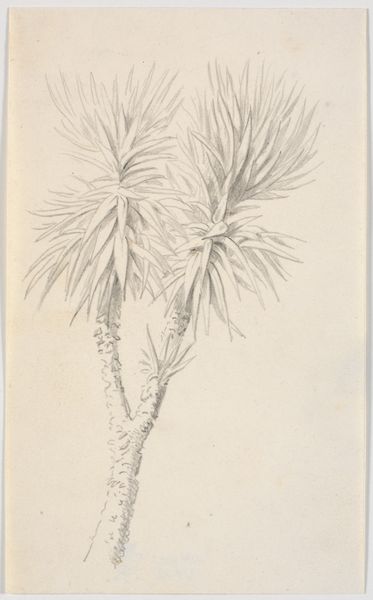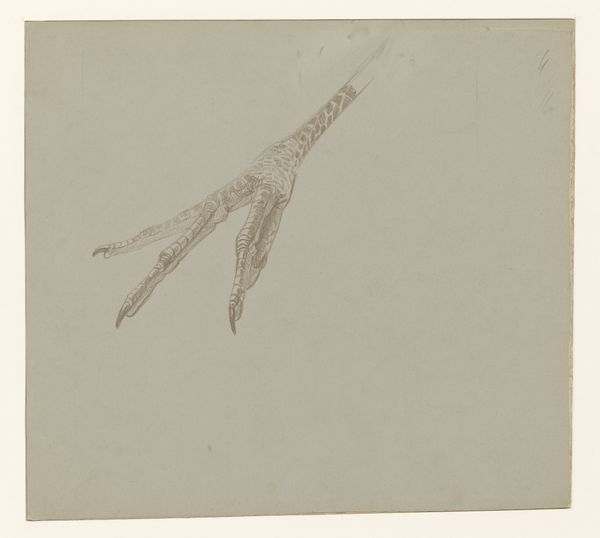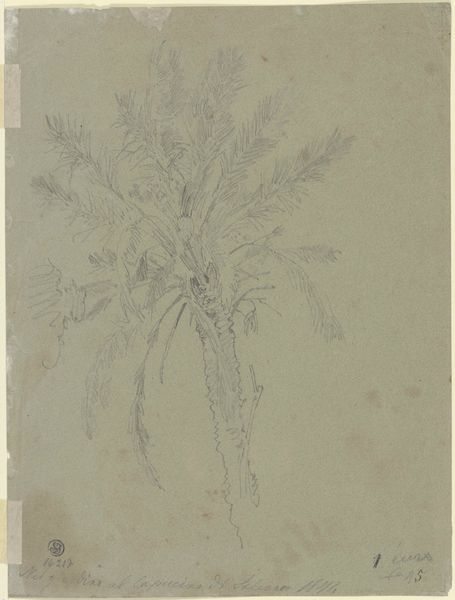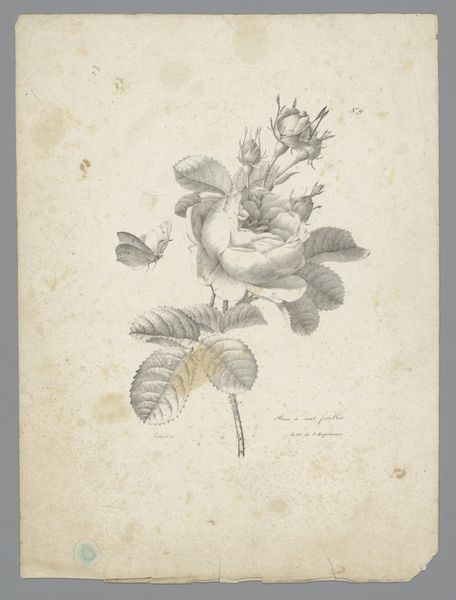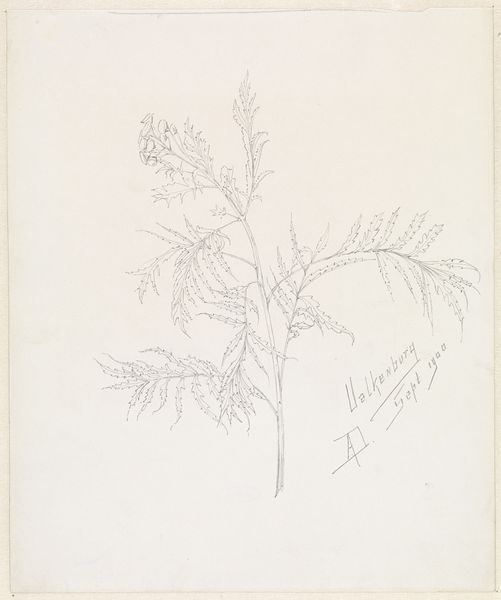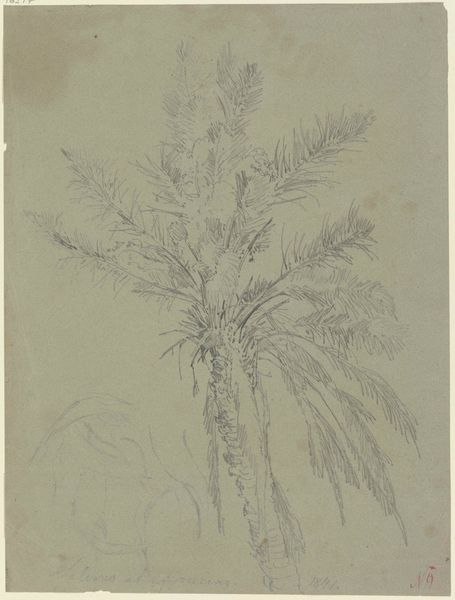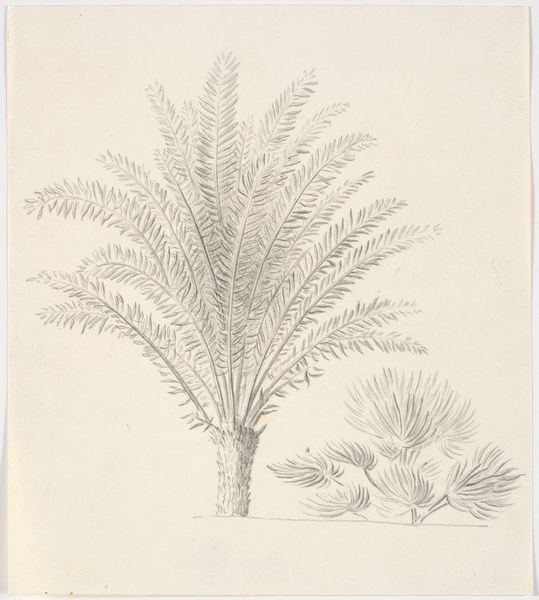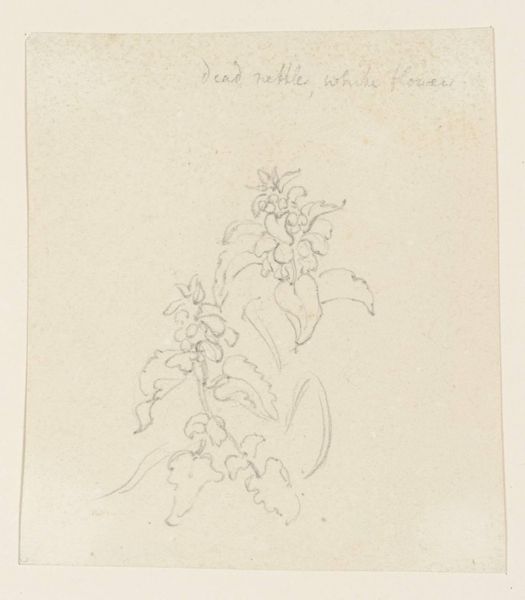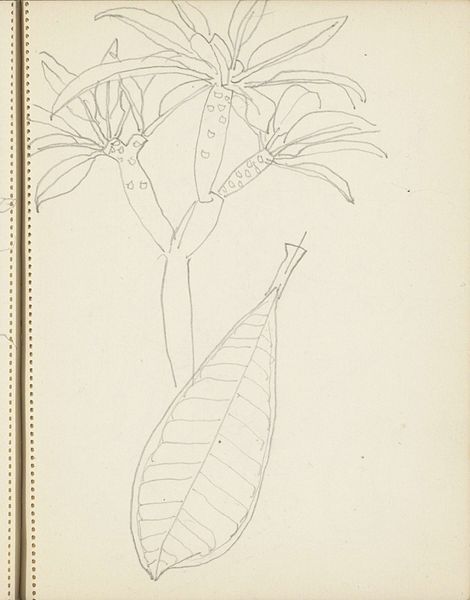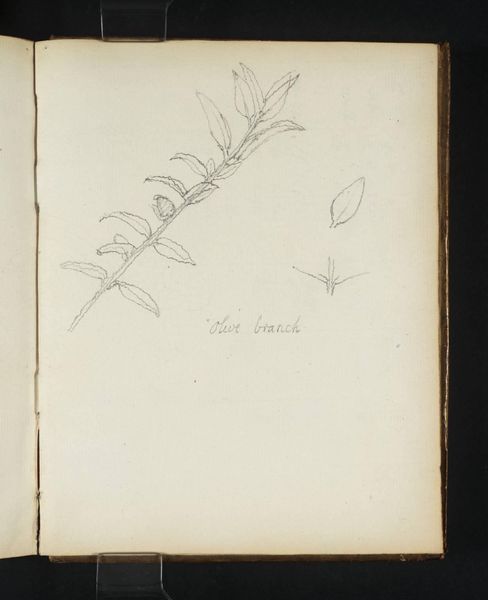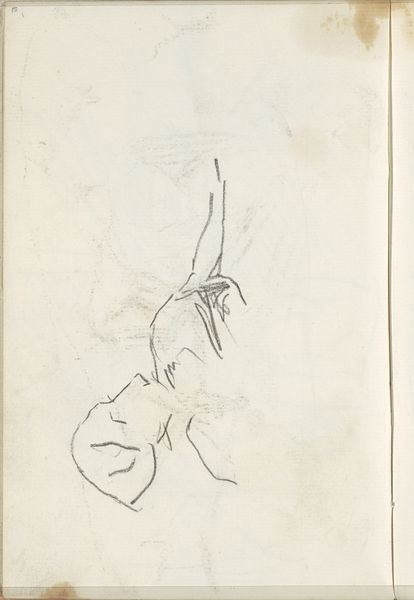
drawing, paper, pencil
#
drawing
#
paper
#
romanticism
#
pencil
#
realism
Dimensions: height 478 mm, width 337 mm
Copyright: Rijks Museum: Open Domain
Curator: Here we have "Bonenplant," or "Bean Plant," a drawing dating from 1811 to 1851, currently held in the Rijksmuseum's collection. It’s a delicate pencil drawing on paper. Editor: It feels incredibly tranquil, almost like a forgotten botanical study. The faint pencil strokes create a soft, ethereal quality. Does anyone else hear whispers of Thoreau and Walden Pond? Curator: The work's dedication to representing plant life in minute detail resonates with the burgeoning Romantic movement, combined with a dedication to Realism that challenged earlier representational conventions. We see in this piece not only the physical object of the plant, but perhaps, too, larger notions about labor and food economies of the period. Editor: Absolutely, I feel it, like, beneath the scientific veneer of this study there's a subtle nod to nature's resilience, particularly because it is "just" a bean plant. Did the artist perhaps want to portray this humble plant on paper because of its value as a life sustaining food, you know, what that would represent to someone during those times? And those open bean pods add an element of vulnerability, like the plant is exposing itself to the world. Curator: Precisely! Consider also, that close examination such as this helped codify how plants could be regarded as sites of biological and cultural exchange; this opens dialogues regarding issues of colonial agricultural policies, particularly with regards to the nineteenth century, and how the cultivation and consumption of "new" fruits and vegetables reconfigured human interactions in social and cultural terms. Editor: Right! This drawing transforms something seemingly simple into a narrative loaded with all sorts of implications and connotations. I almost feel like whispering encouragement to this little plant to make it thrive and nourish others. Curator: By taking what might have been overlooked, we gain an insight into the economic and environmental politics and the transformation of both physical and social geographies. Editor: I'm leaving here seeing a whole new story just from a tiny plant drawing, it’s great!
Comments
No comments
Be the first to comment and join the conversation on the ultimate creative platform.

